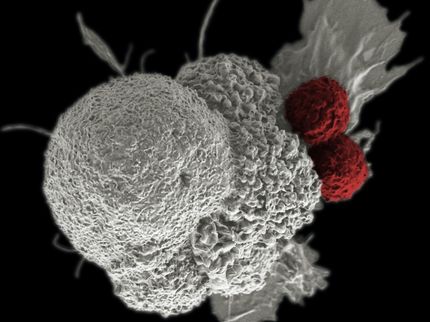Scientists discover new type of virus responsible for a devastating disease in snakes
A mysterious condition called Inclusion Body Disease (IBD) strikes captive boa constrictors and pythons, causing bizarre behavioral changes and eventually death. Scientists investigating an outbreak of IBD among snakes at the Steinhart Aquarium in San Francisco report they may well have found a virus that is responsible for this common but deadly disease, a discovery that could eventually lead to prevention and treatment options. The study appears in mBio®, the online open-access journal of the American Society for Microbiology. The authors report that the virus represents a whole new class of arenaviruses scientists have never seen before.
Among captive boas, IBD is the most commonly diagnosed disease that is thought to be caused by a virus. Snakes that have contracted IBD may initially regurgitate food, but they eventually show dramatic neurological problems, says Michael Buchmeier, a professor of infectious diseases at the University of California, Irvine. Neurological signs include "stargazing," in which the snake stares upwards for long periods of time.
"Some of the symptoms are pretty bizarre - this stargazing behavior, looking like they're drunk, they tie themselves in a knot and they can't get out of it," says Buchmeier. The condition, which is named for the inclusions, or pockets of foreign material, found inside the cells of affected animals, is ultimately fatal. IBD is devastating for large aquariums, as it can infect a large number of snakes before it is identified and quarantine measures can be put in place. Since there is currently no treatment for the disease, infected snakes must be euthanized to prevent them from infecting other animals.
When the disease recently struck a number of boas and pythons at the Steinhart Aquarium at the California Academy of Sciences, the aquarium requested help from scientists at the University of California San Francisco who specialize in discovering novel viruses.
The researchers extracted DNA from tissue samples taken from boas and pythons diagnosed with IBD, and used rapid, high-throughput techniques to learn the sequence of those strands of DNA. In amongst all the snake DNA sequences there were sequences of DNA that clearly belonged to viruses - viruses that are members of the arenavirus family. The authors were later able to grow and isolate one of those viruses using snake tissues cultured in the laboratory.
While it is an important development from a practical standpoint, since identifying the causative agent for a disease is the first step in developing treatments, vaccines, diagnostics, and prevention policies it is also an incredible discovery for virology: the virus belongs to a group of viruses no one knew existed.
Other news from the department science

Get the life science industry in your inbox
By submitting this form you agree that LUMITOS AG will send you the newsletter(s) selected above by email. Your data will not be passed on to third parties. Your data will be stored and processed in accordance with our data protection regulations. LUMITOS may contact you by email for the purpose of advertising or market and opinion surveys. You can revoke your consent at any time without giving reasons to LUMITOS AG, Ernst-Augustin-Str. 2, 12489 Berlin, Germany or by e-mail at revoke@lumitos.com with effect for the future. In addition, each email contains a link to unsubscribe from the corresponding newsletter.
Most read news
More news from our other portals
Last viewed contents
Duke Team finds the constant in bacterial communication - The Rosetta Stone of bacterial communication may have been found.
Muscle_fiber

INTAS Science Imaging Instruments GmbH - Göttingen, Germany
Fred_Landeg
Recommendation against combined use of medicines affecting the renin-angiotensin system
Category:Causinae_by_common_name
Al-Kindi

Society for Clinical Data Management (SCDM) - Brüssel, Belgium
Category:KAZAL_domain
Stealth-adapted_virus



















































